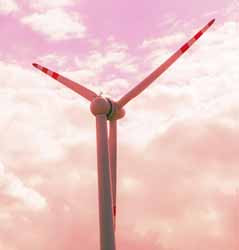Network training on wind turbines
Growth in the European wind energy market has led to the manufacture of increasingly larger turbines (approximately 7.5 MW). However, critical issues such as vibrations or damages of flexible blades and of power electronic converters raise significant maintenance concerns, particularly for offshore wind turbines. Such issues may result in operational downtime, negatively affecting power supply reliability. The EU-funded project SYSWIND(opens in new window) provided future mechanical, civil and electronic engineers and computer scientists training on system identification, and condition and health monitoring of next-generation wind power systems. SYSWIND was an unprecedented cross-disciplinary effort focusing on the latest technologies aimed at promoting wind turbines as a more reliable source of power generation. Vibration signals collected from a wind turbine operating in a wind farm allowed structural identification of a full-scale wind turbine under normal operating conditions. For structural health monitoring of wind turbine components, researchers used a time frequency analysis technique based on empirical mode decomposition. SYSWIND pioneered the technology on wireless sensing with research into adaptive sensing and on-board signal processing. Except for acquiring data, the wireless sensors would also act as nodes for processing and transmitting information regarding the vibration characteristics and wind turbine conditions. Researchers focused on modelling a wind turbine as a multi-body system, also considering the aerodynamic loads on the turbine and the turbulence effects (blade rotational sampling). The reduced-order model developed can be used for simulations and for facilitating the development and design of new structural vibration controllers. Research on vibration control of wind turbines led to developing a smart blade with semi-active structural controllers for stabilising onshore and offshore turbines. The performances of semi-active frequency tracking algorithms and active control algorithms for control of vibrations in wind turbine blades were tested under different loading and operating conditions. Their implementation is expected to increase the turbine component lifetime and improve operational efficiency. The system identification, health monitoring and control techniques developed for wind turbines in SYSWIND should help reduce operation and maintenance costs. This will in turn reduce the cost of energy, which is a key parameter in offshore renewable energy generation.







